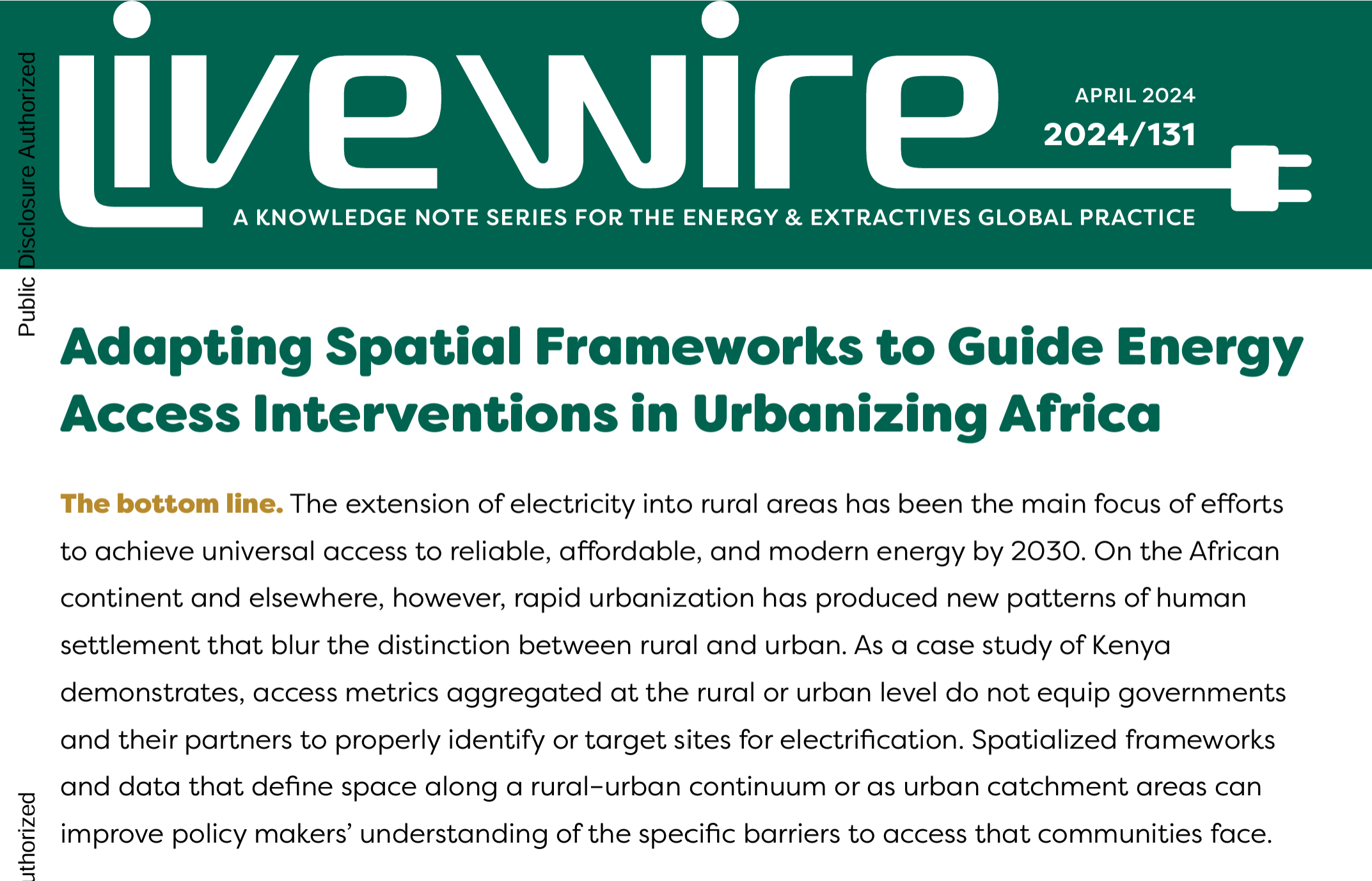The bottom line. The extension of electricity into rural areas has been the main focus of efforts
to achieve universal access to reliable, affordable, and modern energy by 2030. On the African
continent and elsewhere, however, rapid urbanization has produced new patterns of human
settlement that blur the distinction between rural and urban. As a case study of Kenya
demonstrates, access metrics aggregated at the rural or urban level do not equip governments
and their partners to properly identify or target sites for electrification. Spatialized frameworks
and data that define space along a rural–urban continuum or as urban catchment areas can
improve policy makers’ understanding of the specific barriers to access that communities face.
PublicationReport Adapting Spatial Frameworks to Guide Energy Access Interventions in Urbanizing Africa
Published:
November 5, 2024
Author(s):
Publication Type:
Report
Abstract:
